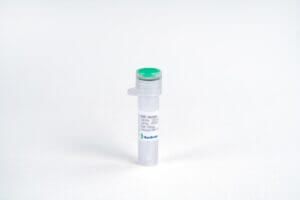100g
Showing 1401–1450 of 2169 results
-

n-Decanoic Acid Sodium Salt
$204.88 Add to cart View Product Detailsn-Decanoic Acid Sodium Salt
-

N-Hydroxysuccinimide
$171.06 Add to cart View Product DetailsN-Hydroxysuccinimide
-

N-Hydroxysuccinimide
$85.80 Add to cart View Product DetailsN-Hydroxysuccinimide
-

N-Isopropylacrylamide
$368.71 Add to cart View Product DetailsN-Isopropylacrylamide
-

N-Lauroylsarcosine
$64.32 Add to cart View Product DetailsN-Lauroylsarcosine
-

N-Lauroylsarcosine Sodium Salt
$137.33 Add to cart View Product DetailsN-Lauroylsarcosine Sodium Salt
-

N-Lauroylsarcosine Sodium Salt, Ultrapure
$300.09 Add to cart View Product DetailsN-Lauroylsarcosine Sodium Salt, Ultrapure
-

N-Lauroylsarcosine, Free Acid
$135.29 Add to cart View Product DetailsN-Lauroylsarcosine, Free Acid
-

N-Methylformanilide
$32.81 Add to cart View Product DetailsN-Methylformanilide
-

N-Methylmaleimide
$421.39 Add to cart View Product DetailsN-Methylmaleimide
-

N-Methylmaleimide
$606.29 Add to cart View Product DetailsN-Methylmaleimide
-

N-Nitroso-N-methylurea
$3,585.67 Add to cart View Product DetailsN-Nitroso-N-methylurea
-

n-Octyltrimethoxysilane
$226.83 Add to cart View Product Detailsn-Octyltrimethoxysilane
-

N-Phenylmaleimide
$111.00 Add to cart View Product DetailsN-Phenylmaleimide
-
![N-Trimethylsilylimidazole, [Trimethylsilylating Reagent]](https://advatechgroup.com/wp-content/plugins/woocommerce/assets/images/xplaceholder.webp.pagespeed.ic.ANHCL-f_RA.webp)
N-Trimethylsilylimidazole, [Trimethylsilylating Reagent]
$104.74 Add to cart View Product DetailsN-Trimethylsilylimidazole, [Trimethylsilylating Reagent]
-

N,N-Dibenzylhydrazine
$501.35 Add to cart View Product DetailsN,N-Dibenzylhydrazine
-

N,N-Dibenzylhydroxylamine
$388.61 Add to cart View Product DetailsN,N-Dibenzylhydroxylamine
-

N,N-Dibutyl-3-aminophenol
$245.35 Add to cart View Product DetailsN,N-Dibutyl-3-aminophenol
-

N,N-Diethyl-p-phenylenediamine
$310.85 Add to cart View Product DetailsN,N-Diethyl-p-phenylenediamine
-

N,N-Diethyl-p-phenylenediamine Sulfate
$137.29 Add to cart View Product DetailsN,N-Diethyl-p-phenylenediamine Sulfate
-

N,N-Dimethyl-N-dodecylbetaine, 35 Percent Solution
$337.67 Add to cart View Product DetailsN,N-Dimethyl-N-dodecylbetaine, 35 Percent Solution
-

N,N-Dimethyl-p-phenylenediamine, Free Base
$280.05 Add to cart View Product DetailsN,N-Dimethyl-p-phenylenediamine, Free Base
-

N,N-Dimethyl-p-toluidine
$147.02 Add to cart View Product DetailsN,N-Dimethyl-p-toluidine
-

N,N-Dimethylglycine Hydrochloride
$167.73 Add to cart View Product DetailsN,N-Dimethylglycine Hydrochloride
-

N,N,N’,N’-Tetrakis(2-hydroxyethyl)ethylenediamine
$107.38 Add to cart View Product DetailsN,N,N’,N’-Tetrakis(2-hydroxyethyl)ethylenediamine
-

N,N’-Bis(salicylidene)ethylenediamine, 99+ Percent
$290.41 Add to cart View Product DetailsN,N’-Bis(salicylidene)ethylenediamine, 99+ Percent
-

N,N’-Carbonyldiimidazole, High Purity
$1,354.23 Add to cart View Product DetailsN,N’-Carbonyldiimidazole, High Purity
-

N,N’-Dicyclohexylcarbodiimide
$139.29 Add to cart View Product DetailsN,N’-Dicyclohexylcarbodiimide
-

N,N’-Diisopropylcarbodiimide
$437.09 Add to cart View Product DetailsN,N’-Diisopropylcarbodiimide
-

N,O-Dimethylhydroxylamine Hydrochloride
$377.99 Add to cart View Product DetailsN,O-Dimethylhydroxylamine Hydrochloride
-

N,O-Dimethylhydroxylamine Hydrochloride
$128.70 Add to cart View Product DetailsN,O-Dimethylhydroxylamine Hydrochloride
-

Naphthol Green B
$120.04 Add to cart View Product DetailsNaphthol Green B
-

Naphthol Yellow S
$116.08 Add to cart View Product DetailsNaphthol Yellow S
-

Naproxen Sodium, USP
$1,457.26 Add to cart View Product DetailsNaproxen Sodium, USP
-

Nectin-2/CD112 Fc Chimera, Human
$172.50 Add to cart View Product DetailsNectin-2, also known as CD112 (Cluster of Differentiation 226) and PVRL2 (Poliovirus receptor-related 2), is a human plasma membrane glycoprotein. This protein is a modulator of T-cell signaling and can be either a costimulator of T-cell function or a coinhibitor, depending on the receptor it binds to. Upon binding to CD226, it stimulates T-cell proliferation and cytokine production, including that of IL-2, IL-5, IL-10, IL-13, and IFNγ. It can also inhibit T-cell proliferation upon interaction with PVRIG. Nectin-2 also acts as a receptor for herpes simplex virus 1 (HHV-1) mutant Rid1, herpes simplex virus 1 (HHV-2) and pseudorabies virus (PRV).
-

New Methylene Blue N
$1,797.43 Add to cart View Product DetailsNew Methylene Blue N
-

Niacin, Powder, FCC
$75.46 Add to cart View Product DetailsNiacin, Powder, FCC
-

Niacin, Powder, USP
$129.57 Add to cart View Product DetailsNiacin, Powder, USP
-

Niacinamide
$71.01 Add to cart View Product DetailsNiacinamide
-

Niacinamide, FCC
$103.47 Add to cart View Product DetailsNiacinamide, FCC
-

Niacinamide, USP
$97.16 Add to cart View Product DetailsNiacinamide, USP
-

Niclosamide, Anhydrous, BP
$1,422.85 Add to cart View Product DetailsNiclosamide, Anhydrous, BP
-

Nicotine Ditartrate, Dihydrate
$6,748.17 Add to cart View Product DetailsNicotine Ditartrate, Dihydrate
-

Nigrosin B, Alcohol Soluble
$127.82 Add to cart View Product DetailsNigrosin B, Alcohol Soluble
-

Nigrosin, Water Soluble
$175.06 Add to cart View Product DetailsNigrosin, Water Soluble
-

Nile Blue A
$883.27 Add to cart View Product DetailsNile Blue A
-

Nimodipine, EP
$3,198.92 Add to cart View Product DetailsNimodipine, EP
-

Ninhydrin, Monohydrate, Reagent, ACS
$372.91 Add to cart View Product DetailsNinhydrin, Monohydrate, Reagent, ACS
-

Nitrapyrin
$2,752.38 Add to cart View Product DetailsNitrapyrin
-

Nitrilotriacetic Acid Disodium Salt
$221.50 Add to cart View Product DetailsNitrilotriacetic Acid Disodium Salt






